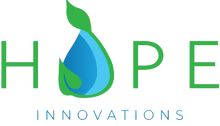Hydroponics 101: The Five Essential Components Every System Needs
With so many hydroponic methods available, it can be overwhelming to know where to start. But no matter which system you choose, these five essential components are the building blocks for any successful hydroponic garden.
Introduction
Hydroponics offers a myriad of methods and systems, from NFT (Nutrient Film Technique) to deep water culture and aeroponics. The options can seem endless and complicated, but at their core, every hydroponic system relies on five fundamental components. These components are crucial to ensure that your plants not only survive but thrive. Understanding these essentials will help you build a hydroponic system that works efficiently, no matter what form it takes.
1. Light: The Lifeblood of Plant Growth
Light is the first and most critical component of any hydroponic system. Without light, plants cannot photosynthesize, which means they can't produce the energy they need to grow. In a traditional outdoor garden, plants rely on sunlight, which provides a full spectrum of light that fuels their growth from seedling to harvest. However, in a hydroponic setup—especially one that is indoors or in a controlled environment—you must provide the appropriate light source that mimics natural sunlight. This means selecting the right type of light and ensuring it delivers the specific wavelengths that plants need at various stages of growth.

Why Grow Lights Are Crucial:
- Wavelengths Matter: Light consists of different wavelengths that correspond to various colors. Plants primarily use red and blue wavelengths for photosynthesis. Blue light supports vegetative growth, promoting strong leaves and stems, while red light encourages flowering and fruiting. Without these specific wavelengths, plants can’t effectively produce the energy they need to grow and thrive.
- Mimicking Sunlight: Grow lights are engineered to emit these crucial wavelengths, providing an environment where plants can flourish indoors. Unlike regular household bulbs, which spread light across a broad spectrum that is less useful for plants, grow lights concentrate on the red and blue spectrums, offering the precise light conditions necessary for healthy plant development.
2. Water Distribution: Delivering Nutrients Where They're Needed
Water distribution is the second essential component of a hydroponic system. In hydroponics, water serves a dual purpose: it hydrates the plants and acts as the delivery system for nutrients, transporting them directly to the roots. Unlike traditional soil gardening, where water filters through the soil to carry nutrients to the plants, hydroponics involves adding nutrients directly to the water. This makes water distribution critical, as it ensures that plants receive the precise amount of nutrients they need at the right times for optimal growth.
Types of Water Distribution:

-
Passive Water Distribution: Passive systems move water to the plants without using pumps or mechanical devices. This is typically achieved through capillary action or wicking, where water is drawn up through a medium to reach the plant roots. Passive systems are simpler and often more energy-efficient, but they may not provide as much control over water and nutrient delivery as active systems.
-
Active Water Distribution: Active systems use pumps and mechanical devices to circulate water and nutrients throughout the hydroponic system. This method ensures consistent and even distribution, which is especially important in larger setups where uniform growth is critical. Active systems allow for greater control over the watering schedule, nutrient concentration, and overall plant health, making them popular in both commercial and advanced home hydroponics.
3. Oxygenation: Keeping Your Plants’ Roots Healthy
Oxygen is vital for plant roots because it plays a critical role in their ability to absorb nutrients. In hydroponic systems, where water is the primary growing medium, oxygen must be actively provided to the roots to prevent them from drowning and to ensure they can absorb nutrients effectively.
Methods of Oxygenation:
-
Passive Oxygenation: Passive oxygenation occurs naturally as water moves or cascades in the system, exposing it to air and allowing oxygen to dissolve. This can happen in systems with waterfalls or through simple turbulence in the water. While passive oxygenation is beneficial and can be effective in certain setups, it may not be sufficient for all plants or larger systems, especially those with dense root structures.
-
Active Oxygenation: Active oxygenation involves using air pumps to inject air directly into the water, significantly increasing the dissolved oxygen levels. This method is crucial in systems like deep water culture (DWC) or nutrient film technique (NFT), where maintaining high oxygen levels is essential for healthy root development and nutrient uptake. Active oxygenation not only prevents root suffocation but also stimulates vigorous root growth, leading to healthier and more productive plants.
4. Nutrients: The Essential Building Blocks of Plant Growth
Nutrients are the fourth key component of any hydroponic system. In traditional soil gardening, plants rely on a complex cycle in the soil to break down organic matter into a form that can be absorbed by the roots. This process involves microorganisms breaking down organic material into essential nutrients like nitrogen, phosphorus, and potassium, which plants then take up. However, in hydroponics, you bypass this entire process by directly feeding the plants with a nutrient solution added to the water. This direct delivery system allows plants to absorb nutrients more easily and faster since they do not need to wait for organic matter to be broken down.
Why Hydroponic Nutrients Are Different

Use Only Hydroponic Nutrients: It’s essential to use nutrients specifically designed for hydroponics. While it might be tempting to use cheaper, off-the-shelf garden fertilizers, these are formulated for soil-based gardening and assume the presence of soil to supply certain micronutrients. In hydroponics, where there is no soil, using regular garden fertilizers can lead to nutrient deficiencies because they do not contain the full spectrum of nutrients required by plants in a soil-less environment.
Hydroponic nutrients are completely soluble in water and do not precipitate out. As well as they are carefully formulated to provide the correct balance of macro and micronutrients necessary for plant growth. These include essential elements like nitrogen (for leaf growth), phosphorus (for root and flower development), and potassium (for overall plant health), as well as trace elements like calcium, magnesium, and iron. This ensures that every nutrient required by the plant is present in the right proportions, promoting healthy and vigorous growth.
For more information on hydroponic nutrients and how to chose one visit this guide on hydroponic nutrients.
5. Grow Media: Providing Stability and Support
The final essential component of a hydroponic system is grow media. Grow media provides physical support for the plants, holding the roots in place and helping to maintain the right balance of water, nutrients, and oxygen. Unlike soil, which also acts as a nutrient source, grow media in hydroponics is typically inert, meaning it doesn’t contribute any nutrients to the plants. However, some types of grow media, such as coconut husk, can add nutrients to the system but you still can not rely on it soly to feed your plants.
Popular Grow Media Options:
-
Rockwool: One of the most commonly used grow media, Rockwool is made from spun volcanic rock and is known for its excellent water retention, air flow, and root support. It’s antifungal, antibacterial, and easy to work with, making it a reliable choice for many hydroponic gardeners. However, Rockwool is not biodegradable, which can be a downside for those looking for more eco-friendly options.
-
Expanded Clay Pellets: Also known as hydroton, these pellets are reusable and provide excellent drainage and aeration. They’re heavier than other media, which can offer stability for larger plants, but they can also be cumbersome to handle. While they are more expensive upfront, their reusability makes them a cost-effective option over time. However, they require pre-soaking and thorough cleaning between uses to prevent the buildup of salts and other residues.
- Hemp: For those seeking an organic and biodegradable option, hemp grow media is a viable choice. It provides good water retention and is environmentally friendly. However, hemp breaks down over time, which can lead to clogging or contamination in your hydroponic system if used for long periods. It’s best suited for short-term crops and may require frequent replacement to maintain optimal growing conditions.
Final Thoughts:
The Common Threads in Every Hydroponic System No matter which hydroponic system you choose—whether it’s a simple Kratky method, a sophisticated aeroponic setup, or anything in between—these five components (light, water distribution, oxygenation, nutrients, and grow media) are always present in some form. Understanding how each element functions and interacts with the others is essential for building and maintaining a successful hydroponic garden.

Ready to start your hydroponic journey with ease? Check out our Eden Tower vertical system—a super simple solution that comes with everything you need to grow your own food successfully. Learn more and get started at HopeInnovation.ca.





Leave a comment